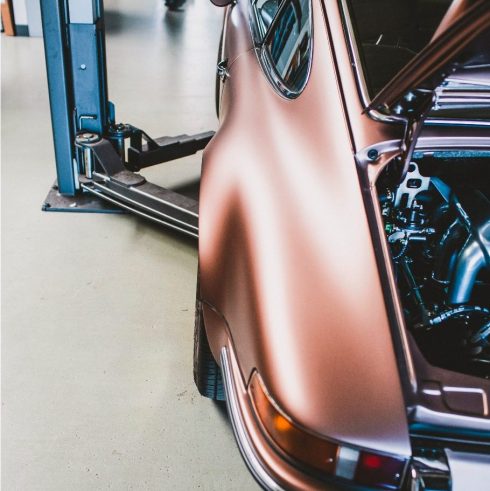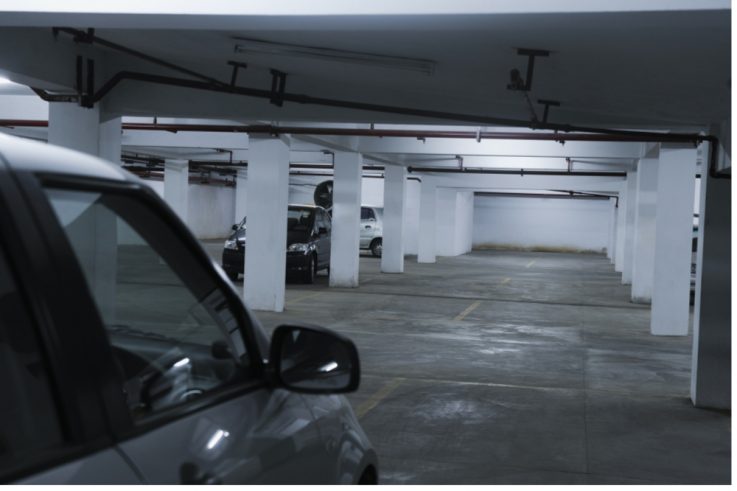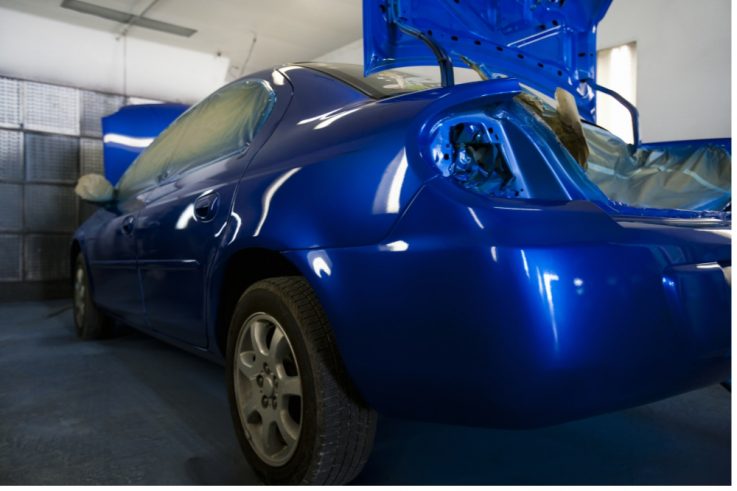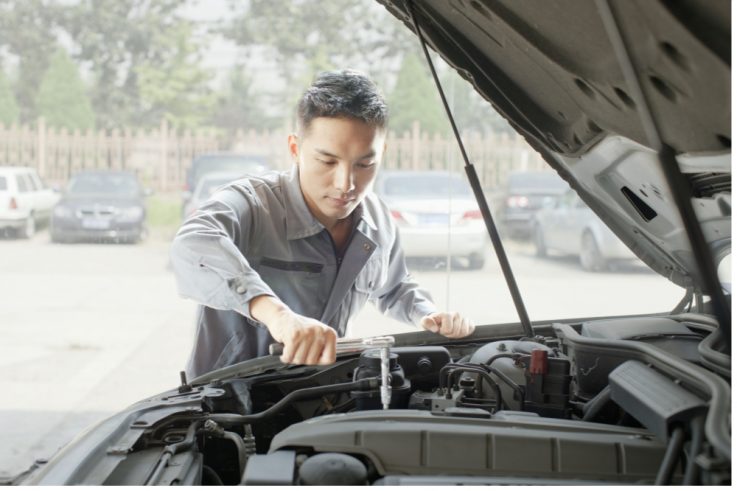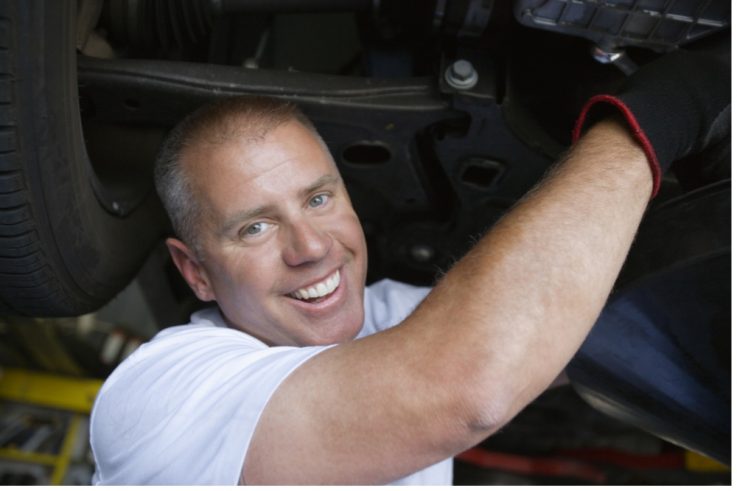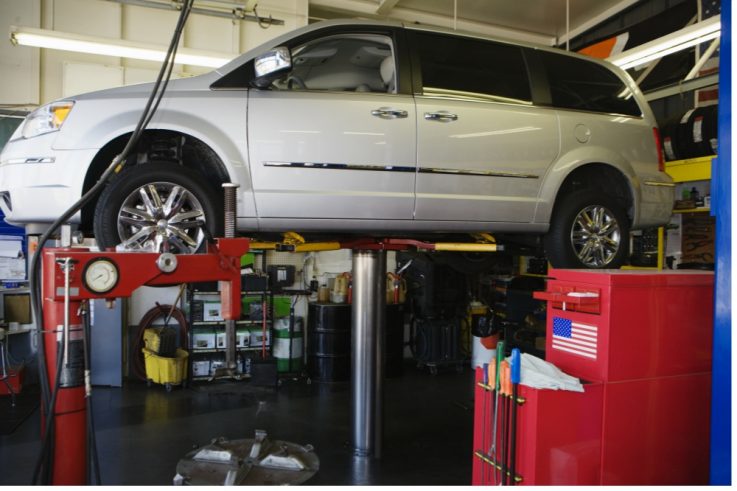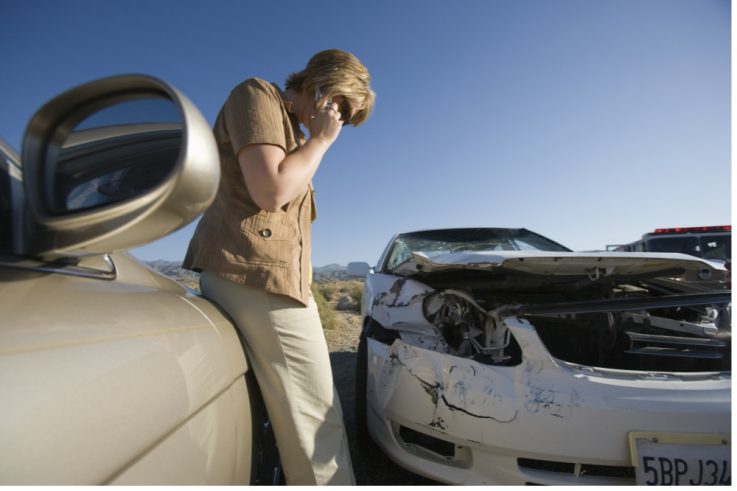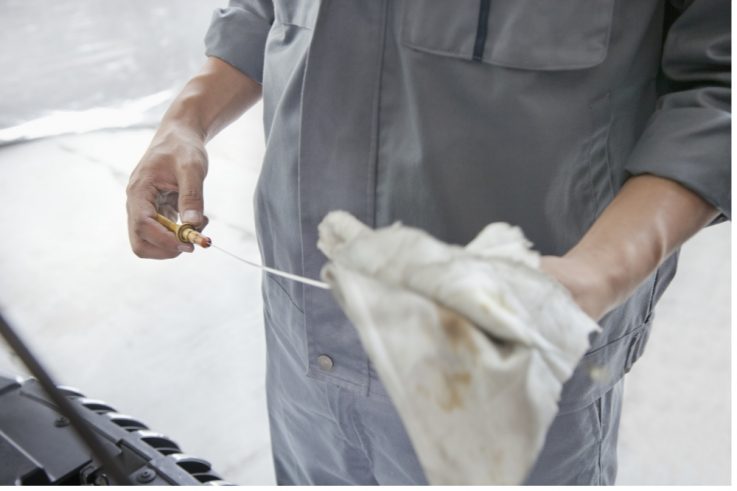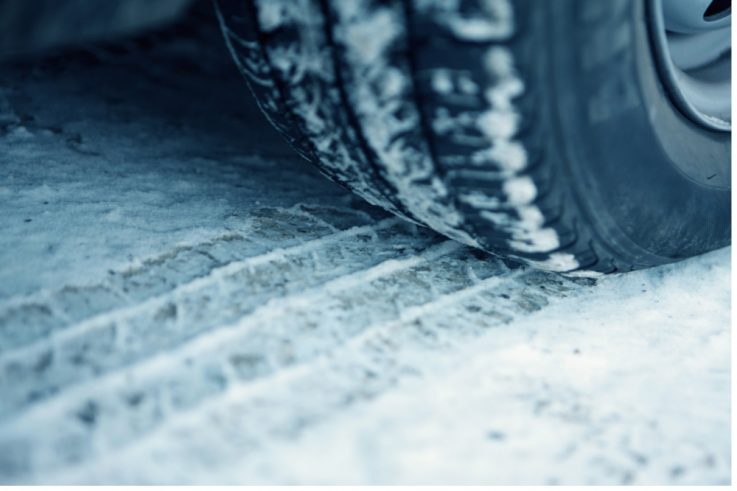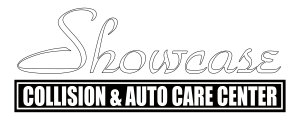- by ShowcaseCollisionInc
- 0
What Should A Car Repair Estimate Have?
In many states of this country, it is a requirement that any auto repair organization provide a written estimate to customers which includes an itemization of all services and parts which will be required to conduct repairs. Even if you live in a state which does not have this requirement, you should obtain a written estimate from any repair service, so that you can have a specific listing of everything being done.
Most repair services will gladly provide this estimate because it’s in their best interest also to show the kind of work they can do, and the parts necessary to accomplish repairs. Written estimates for repair work should include a bare minimum of these essential itemizations:
- costs associated with replacement parts
- all costs associated with any labor which is necessary
- a very specific description of the work they will do on the vehicle
- some kind of statement which guarantees the agreed-to dollar amount will not be exceeded without prior customer approval.
Whether or not your state requires a written estimate when car repairs are necessary, you as the customer should always insist on one, so that you can protect your rights, and make sure that you are not taken advantage of by any repair service.
You should consider this written estimate to be a contract between you and the repair shop, which includes a description of the work to be done and the cost of all that work.
You can avoid a great many problems down the road when you have this car repair estimate in hand because you can always refer to it if any future disputes or disagreements should arise. It’s a very good document to have which you can fall back on, to support your case when any problems surface.
Options beyond a Written Estimate
Just as some states require a written estimate from repair services, some states also will allow you to waive your right to a written repair estimate. This is not recommended at all, because it leaves you vulnerable to a considerable number of potential misunderstandings and disagreements down the road.
Whether or not you trust the repair service working on your car, it’s never a good idea to relinquish your right to a written car repair estimate.
A better option would be to at least ask the repair shop to contact you ahead of time if the repairs will exceed a certain dollar amount. This will avoid you to pay an unexpectedly high repair bill, and it will remove the open-ended nature of the contract between you and the repair service.
If you didn’t have this kind of understanding in place, and you have no written estimate, it’s entirely possible that a repair service might spring an exorbitant repair bill on you, and you would have no recourse other than to pay it, or you wouldn’t get your automobile back.
Any time that you actually sign a repair order, it puts the responsibility for all charges directly on you. For this reason, you should make a point of reading the estimate very carefully, and asking for an explanation about anything which doesn’t make sense to you, or which you don’t clearly understand.
You should always insist on a very clear written estimate which specifically details all the costs for both labor and parts, and which has a very clear description of the work to be performed.
Please consider that…
If there’s anything on the written estimate which doesn’t seem clear enough to you, you should ask for clarification, or ask to revise the written estimate to include language you do understand. In addition to all this, when you find out that you have major repairs which may be necessary, it’s probably worth your while to get a second opinion from another repair service.
While this may cost you a little extra money and a little extra time, in the long run, it might very well be worth it because a second professional opinion may be in direct contrast to the original estimate you got. When there is a significant amount of money at stake for repair bills, it’s a good idea to either confirm the original estimate or dispute it, and it could end up saving you a considerable amount of money.
The best way to Protect Yourself
A car repair estimate is one of the best ways of protecting yourself as a consumer because they will literally state everything that mechanics will do to your car and the cost of all their services. It will help immensely if you have a trusted mechanic or repair service that you have dealt with for years, and whom you can rely upon to provide quality parts and service, at appropriate fees.
This kind of person or organization will not be seeking to take advantage of you, and will not have hidden fees built into any estimate provided to you.
If you don’t have the luxury of working with a particular repair service for a long period of time, it might be worth your while to consult friends and relatives to find organizations they can vouch for, from whom they’ve got honest and superior work service. If no testimonials are available, the next best thing you can do is consult online reviews of service organizations in your area. When you notice that a number of individuals have had great service and great experiences from a particular organization, you can feel a bit more comfortable that you will receive the same high-quality service.
On the other hand, if you encounter reviews that include a number of bad experiences such as over-charging or inferior work, this would be a good organization to avoid. Apart from this, it’s also a good idea to look for the rating from the Better Business Bureau, so you can be sure that any specific company has been operating under the good graces of that organization.
In conclusion
There is no one who’s going to look out for your best interests when it comes to auto repairs other than yourself, so make sure to do everything you can to avoid an unpleasant experience.
- by ShowcaseCollisionInc
- 0
Auto Repair Shop’ Safety Tips When Leaving For A Getaway
If you are planning a vacation getaway, you’ll probably have tons of things to prepare, and countless details must be attended to on an auto repair shop before you can actually be on your way and leave your home behind. When leaving your vehicle behind as well, there are some tasks which you should be aware of involving how your vehicle should be stored properly.
If you take these tasks and checks to heart and do a good job of preparing your vehicle for some period of storage, you should be able to count on the same excellent and reliable service once your vacation is over, and you’re back at home. Here are some of the things you should be aware of when storing your vehicle for an extended period.
Don’t activate the handbrake
One good suggestion is to avoid activating the handbrake when you’re leaving your vehicle at home for an extended period. This will allow you to avoid having the brake pads getting caught or stuck in place because if that does happen you can count on some major hassles the next time you take your vehicle out for a drive. To be on the safe side, use a wheel lock or prop a stone or piece of wood against one of the tires to prevent any movement of your vehicle. These are much safer approaches than actually using the handbrake for a long time.
Provide shelter for your car
If you don’t have a garage, you should cover your vehicle completely, to protect it against weather elements and anything else happening in the neighborhood. Make sure to purchase a cover that is capable of completely covering the vehicle so that the entire body can be covered. There are lots of things that might happen while you’re gone which are worse than a little rain or even a downpour, and you don’t want any unpleasant surprises when you come back from your vacation.
Check the spark plugs
When you plan to be gone a long time, it might be a good idea to remove the spark plugs and spray some oil in the socket, before reinstalling the spark plugs when you return. This prevents rust from forming on the cylinder heads, and it will keep them moist so they don’t dry out. You might also want to invest in some additives you can purchase on any auto repair shop, that can provide a protective coating for the sockets, so you won’t have to worry about any functional issues when you return.
Give the car a good cleaning
Most of the time, vehicle owners don’t really take the time to clean out their vehicles when they’re headed out for an extended vacation or time away from home. It’s one of the last things that you think about because there always seem to be more pressing issues associated with the trip itself, so, understandably, you don’t think about the vehicle you’re leaving behind. However, it is a good idea to thoroughly clean the interior of the car so that bacteria don’t have a chance to grow on the seats or the carpeting. You may also want to install some air fresheners which will impart a pleasant fragrance to the interior of the vehicle, and give it a nice fresh smell when you make use of it for the first time after your return.
Top off your gas tank
Rust has the potential for forming inside the fuel tank when a vehicle is not used for any length of time. One way to avoid this possibility is to make sure that your gas tank is topped off with high-octane gasoline. With a full tank of gas, there will be no chance for oxygen to combine with the metal of the tank and create harmful rust on the interior. It will also provide a practical benefit because when you return from your stay away from home, you’ll have a full tank of gas and you’ll be ready to take your vehicle anywhere without having to gas up first.
Check your car battery
Before leaving, it’s a good idea to check the condition of your car battery, to make sure it’s up to snuff and ready to go when you come back. Another approach would be to remove the battery altogether and store it in a cool place while you’re away from home. If you do this, make sure to store the battery in a place where direct sunlight cannot reach it, because this could degrade the condition of the battery and make it less effective in usage.
Change the oil and filter
Unless you’ve recently had an oil change for your vehicle, it would be a good idea to change the oil and the oil filter when you leave for a vacation at your preferred auto repair shop. Oil that has been used for an extensive period will generally acquire metal filings, water vapor, and other corrosive elements which have the capability of degrading the parts of your vehicle. With fresh oil in your reservoir, none of these components will be able to degrade your vehicle.
Check your tires
Before you leave on vacation, you should check the pressure of your car’s tires, to make sure they are following the manufacturer’s specifications. When the appropriate tire pressure is installed in these tires, you won’t have to worry about any kind of cracking or deflating which might occur. Check to make sure that the valve caps are securely in place, so there are no issues with them. It’s possible that your tires could deflate if they are sitting on any hard surface for a long period of time. You can avoid this by using a jack on each wheel, to lift it off the surface somewhat, so your tires are not bearing the full weight of your vehicle. When the entire car is not resting completely on your tires, most of the pressure of that weight will be relieved, so the tires themselves will avoid being abused or degraded.
- by ShowcaseCollisionInc
- 0
Summer Dos And Don’ts From An Auto Care Center
While you might think that wintertime is the only season you really have to watch out for your car and take good care of it, you should be aware that in some ways, summer can be just as harsh on your vehicle. In order to ensure that your ride is always ready to go when you need it this summer, here is a handy list of things you should be doing according to our auto care center, and a list of things you should be avoiding.
If you can consistently stick to these tips, you should be able to enjoy a summer of great traveling and enjoyable experiences.
DO: Monitor for Overheating
Many of the newer models of vehicles don’t have temperature gauges. Instead, they come with a warning light that tells you when the car is approaching an overheated condition. If your car does have a temperature gauge, make a point of checking it occasionally while you’re driving, especially when you’re driving for an extended period of time, or when conditions are very hot outside.
If you have a newer car that only has a warning light, you should pull over immediately when that light starts to flash, because it is indicating an overheated situation. Don’t continue driving when you realize your car has become overheated because that could lead to more serious consequences.
DON’T: Leave Pets in Hot Cars
If you’re going to have to leave your pet in the vehicle while you go shopping, then you shouldn’t even take the animal with you on a road trip. Even when your windows are cracked open on a hot 90° day, the interior car temperature can soar to 140°F. Dogs are not able to sweat, and since they’re covered in fur, their body temperatures can quickly get out of control.
Every year, a number of pets die because they were left in a car on a hot day. Not only is this an inhumane thing to do, but your family members will be distraught if you insist on taking your pet for a ride with you, and then encounter a tragedy because you left them in the vehicle in a parking lot.
DO: Keep your Tires Properly Inflated
Summertime driving will always have the effect of generating higher tire temperatures, and that in turn will increase the air pressure in your tires. It’s good to get in the habit of checking your tire pressure occasionally at your auto care center, to make sure that tires don’t become overly inflated and overly pressured. While you’re at it, give your tires a visual check to make sure there isn’t excessive wear on the tire tread, because this will cause a performance issue.
You can ignore the importance of your tires since they’re the only thing between you and the pavement, so it’s ultra-important that you keep an eye on their condition.
DON’T: Use Air Conditioning when it Gets Extremely Hot
Whenever you happen to be driving in extremely hot conditions, it’s probably best that you don’t use your air conditioning system. This might happen when you’re driving through one of the southwestern states which can reach temperatures of 110° during the daytime. By engaging your air conditioning system, you will be putting an additional load on your engine, and that can easily cause your car to become overheated.
Better to be somewhat uncomfortable without the air conditioning, than to be stranded along the roadside for hours at a time.
DO: Check your Oil Level Frequently
Of course, summertime isn’t the only time of year when you should be checking your oil level at your auto care center, but it takes on added importance in the summertime when everything is much hotter. There is no longer a need to use different oil types in the winter and the summer because modern multi-viscosity high-quality oils have virtually eliminated the need for two different oil types.
Any good motor oil works in tandem with your cooling system to help regulate engine temperature, and when your oil level is low, that can cause your engine temperature to soar very quickly. When this happens, the oil begins to break down and thin out, and it will lose its effectiveness as a lubricant. Whenever you notice that the oil level is down a bit, you should make a point of refilling the reservoir up to its recommended operating level. Always ask your auto care center for this.
DON’T: Run Cars on Low Fuel
Many of today’s newer vehicles have the fuel pump situated right inside the fuel tank itself. The fuel pump relies on being surrounded by fuel in order to keep it somewhat cool, and if you have a very low level of fuel, there will be no fuel surrounding the fuel pump. That will make it vulnerable to overheating and increase the likelihood of premature failure.
When the temperature outside soars to higher levels, it can cause your fuel pump to fail even more quickly. Make a point of keeping at least a quarter tank of gas on hand, and to be really safe, you should try not to let your fuel reservoir get below half a tank.
TAKE CARE OF: Leaving Plastic Water Bottles in your Car
Every year in this country, people buy more than 50 billion plastic water bottles, and even more than 80% of them will end up in landfills, even though it is pretty easy to recycle them.
When you leave plastic water bottles in your car and they become heated up by interior air temperature, they can leach chemicals into the water they contain, and that can cause some major health issues. You’re much better off to purchase a reusable water bottle and fill it when necessary.
Of course, this won’t be an issue if you never leave plastic water bottles in your car overnight or for extended periods of time, but if you do forget about your water bottles, make sure you don’t drink from them after they’ve been sitting in the heat for a while.
- by ShowcaseCollisionInc
- 0
What Are The Most Common Services Autorepair Shops Provide?
Of necessity, autorepair shops must have the knowledge and skillsets to perform almost all types of repair work on vehicles, because the only other line of defense is the actual dealership where the car was purchased.
When the dealer does not service the vehicles they sell, there is literally no other recourse than to engage the services of a qualified auto repair shop. That requires a working knowledge of how cars work in general, and how specific makes and models perform as well.
That can amount to a considerable body of knowledge, but autorepair shops are generally up to the task and can deliver whatever kind of repair work is called for on a vehicle that needs repairs or normal maintenance. The need for this vast amount of knowledge and experience is one reason why labor costs from skilled auto technicians tend to be so high, and why you have to pay so much.
Here are some of the most common services which autorepair shops must be capable of delivering to customers.
Most Frequently Needed Auto Repair Services
Since most cars operate on the same basic principles, the same kinds of repairs are generally necessary, especially given the fact that the moving parts tend to be similar across all vehicles, and the parts which undergo the most wear and tear are similar in all vehicles.
That being the case, here are some of the parts and systems which most frequently need attention on today’s vehicles:
- Auto maintenance – ordinary maintenance is often necessary, to service belts, fluid levels, moving parts, and sometimes even tires which can become worn with mileage
- Tune-ups – tune-ups are necessary so that a vehicle can continue to run efficiently; generally, it is necessary to change spark plugs and spark plug wires in order to maintain maximum performance
- Diagnostics – computer diagnostics take much of the guesswork out of identifying vehicle problems, by communicating directly with the vehicle’s electronics system to pinpoint any performance issue the car might have
- Warranty work – manufacturers will generally guarantee their parts for a certain number of years, and if any repairs or replacements are needed, they will be paid for by the vehicle maker
- Oil changes – one of the most common maintenance tasks, oil changes are necessary so a vehicle can have clean oil circulating through the engine block, lubricating all the important components there
- Radiator flush and fill – periodically, it might be necessary to flush out the radiator and install fresh fluid to ensure that the vehicle doesn’t become overheated during operation
- Alignments – front ends often need re-alignment when installing new tires, and sometimes after periods of prolonged usage, so as to keep the vehicle traveling in a straight direction
More services you might also need:
- Anti-lock system diagnosis – brakes can be a little finicky these days, and in order to find out exactly what’s happening in your ABS system, it is sometimes necessary to diagnose the issue and take action accordingly.
- Suspension system service – the suspension system consists of your tires, springs, shock absorbers, and linkages that connect your vehicle to the wheels, and if anything is amiss here, you’ll notice it right away in the performance of your vehicle
- Shock and strut replacement – these are responsible for the cushioning and comfort of your ride, and when anything is out of whack here, you will notice that the ride is rougher and more bouncy
- Starter and alternator repairs – any problems with your starter might prevent your car from starting up, and make it non-operational, whereas alternator issues may cause the battery to lose its charge, or to prevent the proper distribution of electricity throughout the vehicle
- Axle work – there are three different types of axles in your car, all of which are responsible for supporting the weight of your vehicle, and for rotating the wheels of the car
- Battery replacement – when a battery becomes drained, it generally is advisable to completely replace it, because otherwise, you may encounter reliability issues, and might not be able to start your car
- Tire replacement – having fresh tires is a critical factor in the safe operation of your vehicle since they are the one component that actually touches the road, and which keep you driving safely on any roadway
Also:
- Transmission fluid service – usually with this kind of service, you’ll have the pan gasket, filter, and fluid itself all changed out. There are actually some vehicles that have their transmissions ‘sealed for life’, and these vehicles do not require transmission fluid service
- Air conditioning recharge – when your air conditioning system isn’t functioning properly, the most common cause is that it needs a recharge, and your auto repair shop can do this by injecting fresh refrigerant into the system so you can enjoy conditioned air once again.
Services Offered by Showcase Collision & Auto Care Center
At Showcase, we can provide both collision work and auto repairs at our two locations. For the best collision work in the region, bring your vehicle into our Warren, MI shop, and for the finest in auto care, you should bring your vehicle to our Sterling Heights, MI shop.
Here are some of the services we specialize in at these two locations:
- Collision Work – we can do frame straightening and replacement, hail, and storm damage, repairs of dents, rust repair, complete restorations, computerized color matching, refinishing, mobile estimates, pickup and delivery service, claims assistance, windshield repairs or replacements, vandalism damage, theft damage repairs, custom hoods, detailing, and paintless dent repairs.
- Auto Care – we have a full line of auto repair services which we can provide for you, including battery replacements, tire replacement, air conditioning repairs, brake repairs or replacements, exhaust system repairs, engine diagnostics, suspension repairs, transmission repairs, radiator repairs, and fuel system repairs.
Whenever you have any question about whether or not we can repair some problem your vehicle has, please contact us and talk with our friendly representatives to set up an appointment for repairs, or to find out the answer to a question you might have.
- by ShowcaseCollisionInc
- 0
Tips for Getting An Accurate Car Damage Estimate
Getting an accurate car damage estimate for the work you need to do on your car after an accident can be critical if you want to avoid being fleeced. There are a great many collision shops where you can be drastically overcharged for parts and service, so it’s up to you to do your homework and make sure that any estimates are in the ballpark of reasonableness.
One of the first things you should do is to find out the actual value of your vehicle, as it stood before your accident. There are a couple of references you can consult in this regard, including the Kelley Blue Book and the National Association of Automobile Dealers NADA Guide.
Of course, if your insurance carrier decides that the cost of repairing your vehicle is more than the car is worth, i.e. the car has been totaled, then they won’t pay for the repairs.
It will be up to you to make a case for demonstrating that the pieces of the car are worth more than the book value, thereby bumping up your repair settlement. In order to do that, you’ll have to provide your insurance carrier with such evidence as mileage records, service history, and possibly testimony from local mechanics. This kind of support should convince your insurance carrier that your car is worth more than a typical vehicle from its make and model class.
Know the Process
It’s important that you understand how the claims repair process works so that you can go about getting the most accurate estimate for any repairs you need on your vehicle. Whenever you file a claim with your insurance company, they will probably put you in touch with a claims adjuster who will confirm your loss, and make at least an initial determination on what it might cost to restore the vehicle to its former condition.
Keep in mind that this initial car damage estimate is merely a benchmark, and it’s not intended to be a final claim payment at all. The insurance company doesn’t expect you to simply accept the estimate made by their adjuster, until after you have personally established that this estimate will indeed cover all the costs of any necessary repairs. The insurance company will also expect you to obtain one or more estimates from your local mechanic or car dealer so that you can compare them to the estimate made by their claims adjuster.
A word of warning
When you do provide these estimates to your insurance carrier, it’s entirely likely that they may choose to accept the lowest bid. From the perspective of the insurance company, they’re trying to avoid paying for an inflated repair bill, but that may not synchronize with what your own perspective is. If you decide to take one of the higher estimates, prepare to justify to the insurance company why that higher estimate is necessary, and why it’s more appropriate than the low bid.
Your insurance carrier cannot force you to get your car at a shop of their choice, but they can ask you to look for other estimates if they feel that the quotes you gave them are too high. There is always room for negotiation if you believe that the preferred estimate by your insurance carrier is too low, and will not cover the cost of repairs adequately. Of course, in this case, you’ll need to justify to the claims adjuster why you feel a higher estimate is more appropriate.
Tips for Accurate Estimates
There are some things you can do which will help you to get the most accurate estimates for any repair work necessary following an accident. The first of these is to do whatever research is appropriate on the collision shops that you’re considering to have the work done.
Make sure that any estimates you get are from reputable repair shops which have a history of doing top-notch, high-quality work. Read online reviews and seek referrals from other people who may have had collision work done at those shops.
Ideally, you should have at least three written estimates from different collision shops, and each of these estimates should include a breakdown of all the parts and labor which will be necessary to restore your vehicle. Another tip is to avoid making a decision based on a single car damage estimate. The reason this is wise is that there can be a great deal of variance between estimates, since one mechanic may discover hidden repairs which are necessary, while another one overlooks them.
If your claims adjuster recommends a collision shop where the estimate is substantially lower than other places, this should be a red flag to you, and you should definitely conduct more research. Your best bet is to do a line-by-line comparison of the details on any estimate to see where the differences lie, and then to ask questions about why they omit or include certain parts and services.
One last tip for you to keep in mind is that you don’t necessarily have to wait for your insurance company to assign a claims adjuster to your claim.
In conclusion
If you need your vehicle back as soon as possible, it might be worth your while to pay for the repairs yourself and then claim any reimbursement from your insurance carrier. This is a little risky since getting back the full amount for completed repairs is pretty difficult.
To protect yourself, it’s always best to pay close attention to everything listed on a detailed estimate and to work closely with your insurance company to get adequate reimbursement for all necessary repairs. By acquiring multiple estimates, you can ensure that you get the most accurate possible car damage estimate for repair work, and you’ll also be reasonably sure that damage that is not visible has been accounted for. This can be extremely important because there are often internal repairs necessary that are not apparent to the naked eye.
- by ShowcaseCollisionInc
- 0
Preventing Auto Repair Problems
You need to have a good working knowledge of how your vehicle actually works when you need repairs, and how to identify many of the most common auto repair problems.
If you haven’t already got a trusted mechanic, you should make every effort to find one, and make sure you ask the right questions whenever you work with that individual. You should also be aware of your rights as a consumer, so that an unscrupulous repair person doesn’t take advantage of you, and fleece you out of your hard-earned money.
Here’s the best way to head off any auto repair problems which would otherwise be necessary.
Avoiding Problems
Even if you’re not particularly interested in automobiles, it’s worth your while to have at least a general understanding of how they work, because this will really help you to head off all kinds of repair problems. You will be able to identify quite a few vehicle problems simply by conducting a regular visual inspection, listening for unusual noises, smelling odors that are not common, and paying attention to the way your vehicle handles as you drive around the neighborhood every day.
Visual Inspection
It might not mean much if you see a drop of fluid under your vehicle every now and then, but if you see a wet spot beneath your vehicle, it should be checked out.
Even worse, when you notice a puddle that has accumulated under your car, that calls for immediate action and should be investigated right away. If you notice a yellowish-green, fluorescent orange, or pastel blue fluid… any of these could be an indication that your engine has overheated, or that you have an anti-freeze leak:
- An antifreeze leak could be attributable to a cracked hose, a leaky radiator, or a water pump.
- If you notice a black, oily fluid or one that’s dark brown, that’s usually an indicator that your engine is leaking oil, and the problem could be a worn gasket or a bad seal.
- Reddish fluid under your vehicle is most likely an indication that you have a leak in your power steering system or in the transmission somewhere.
- If you see a puddle of clear water under your vehicle, that’s not usually an indicator of any kind of problem, and it’s most often a harmless accumulation of condensation which came from your air conditioner.
Unusual Odors
You’d be surprised how many auto repair problems can be identified by actually smelling them while your car is operating. For instance, if you smell something like burnt toast, this is often an indication that you have insulation that is burning somewhere, or that your car has an electrical short. It would be best not to drive the vehicle until the actual problem has been diagnosed.
When you smell the unmistakable odor of rotten eggs, this is very often an indication that the catalytic converter or some other emission control device has failed. Diagnose the problem as quickly as possible and repair it if necessary.
When you smell a thick, acrid order, that is generally an indication that oil is burning, and you should take some time to look for signs of an oil leak.
If you smell gasoline vapors after a failure to start the engine, this usually indicates that you have flooded the engine. When you notice this odor, wait a few minutes before attempting to restart the engine.
If you continue to smell gasoline, there could be a leak in your fuel system, and if this is the case, it will be a dangerous situation that requires prompt attention.
When you smell a chemical odor or something like burning resin, that could be a sign of an overheated clutch or overheated brakes. If you’ve been driving on mountain roads, you might need to let your brakes cool before proceeding. When you smell a kind of sweet, steamy odor, that may be a good indication of a coolant leak.
Finally…
Check your temperature gauge for an overheating indication, and if you don’t see one, it could be that the engine itself is overheated. If you suspect this is the case, you should quickly pull over at the nearest repair station and have it checked out.
Strange Sounds
You can often identify auto repair problems simply by paying close attention to the sounds that you hear coming from it. When you hear a squeal which is a shrill, sharp type of noise, it could indicate that you have worn power steering, or that you have a loose air conditioning belt. A clicking noise might indicate a loose wheel cover, a stuck valve lifter, or a bent fan blade.
A high-pitched metallic sound heard while the vehicle is in motion, could be caused by excessive wear on your brakes, in which case it’s time for you to have some maintenance done. When you hear a low-pitched rumble, this could be a sign of an exhaust pipe, muffler, or converter going bad, or one which has developed a perforation. It might also be a sign that your universal joint or some other component in the driveline has become worn out.
When you hear a high-pitched tapping kind of sound, this may be caused by gasoline that has a lower octane rating than what should be used in your vehicle. You should check your owner’s manual so that you are aware of the appropriate octane rating for your car, to make sure this isn’t the case. If you continue to hear this kind of pinging sound, it could be that you have a problem with your engine ignition timing.
Don’t forget
If you have a knock that sounds like a consistent pounding, it may be attributable to a worn crankshaft, or possibly the connecting rod bearings. It might also be a sign that you have a loose transmission torque converter.
When you hear a random thumping sound that is akin to a clunk, that could be an indicator that you have a loose exhaust pipe or muffler, or that you have a loose shock absorber or some other component in the suspension system.
- by ShowcaseCollisionInc
- 0
Check All These Things After Going Through An Auto Collision Repair Shop
Most auto collision repair shops are aware of the fact that the repair work on any vehicle only constitutes part of the job, and that other extra services, which are necessary, can make the vehicle owner even happier. The effort put into repairs by any specific collision shop can make the difference between a once-off and one you might visit over and over again.
Given the fact that most auto collision repair shops must follow a pre-set procedure, you can pretty much count on the fact that these repairs will be accomplished pretty much in the same way by any shop you work with. That means the real difference between many different repair shops is in the level of service and the level of customer satisfaction they can provide you.
When your car has been through some kind of collision work, there are a number of things you should check afterward, so that you can be completely satisfied with the service results on your preferred Auto Collision Repair Shop.
Before you Leave the Auto Collision Repair Shop
Before you drive away from the collision shop after the repair work has been done, you should definitely do a close visual inspection of the repairs, and you should also review them at a distance to make sure nothing looks out of the ordinary.
Specifically, you should check the paint in the affected area, so you can be sure that the texture and color match the rest of the vehicle. Make sure that the vehicle is clean and has no leftover remnants of the repair employees’ work.
Another thing you should do before leaving the collision shop is take a test drive to make sure that any mechanical repairs are in order, and that the vehicle is functioning normally. You should bring up the issue immediately rather than putting it off till later.
After leaving the collision shop, any issues which you identify probably won’t get to have repairs anytime soon, so it’s definitely to your advantage to take care of everything right on the spot.
Check the Airbag Replacement
If your vehicle got in a fairly serious accident, it’s very likely that the airbag will need a replacement.
There really is no way that a reputable collision shop would overlook the replacement of your airbag, but it is possible that a less than scrupulous dealer would deliberately overlook it.
Airbags can fetch a hefty price on the black market, and this could tempt some fly-by-night operators to charge the insurance company for an airbag, without actually installing a new one. This would also allow the repair shop to sell the airbag and bring in additional income for the same lack of new installation.
Make sure to check whether the airbag light indicator is on, or if you hear a hollow sound from your steering wheel when you knock on it lightly.
Ask around for Torque Issues
If your vehicle had any suspension parts replaced during the collision work, they will definitely need to be torqued so they are once again in compliance with the manufacturer’s specifications. If they don’t do this, it could cause an assembly to be loose, and that will have a huge negative impact on the performance of your vehicle, as well as how it handles.
You should make a point of inquiring with the collision shop about their procedures if you need to replace suspension parts, and you should also ask them to provide you with their torque specifications.
Look Out for Poor Alignment
If you notice that the car is pulling to one side or the other after it has been repaired, this is probably an indication that the car has poor alignment. This may be due to a misaligned unibody structure or a bent frame, but it’s something that you don’t want to have to deal with on an ongoing basis.
It’s fairly easy to straighten out some vehicles after they’ve been involved in a car crash, but others are more difficult to align. You don’t want to accept a poorly aligned car, because that will wear out your tires much more quickly, and you’ll find that you’re replacing them sooner than you should.
It will also contribute to poor handling of your vehicle, and it will be more difficult to keep it centered in a driving lane.
Be Aware of Car Clipping
The term ‘clipping’ refers to welding a whole used section from another vehicle onto yours after an accident. A couple of decades ago, this was a fairly common practice, but nowadays most vehicles have lightweight high-strength materials, and welding sections from other vehicles will frequently cause structural weaknesses to develop.
You should make a point of bringing this up with your collision center, to make sure they don’t have a policy that includes car clipping because that will be unsafe for your future driving.
Make Sure your Auto Collision Repair Shop used High-Quality Parts
Some insurance companies require that collision centers use aftermarket parts that might not be up to snuff with manufacturer specifications. This makes it important for you to find out exactly which kinds of repair parts were used when restoring your vehicle.
If the mechanic uses inferior parts to repair your vehicle, it could have a major impact on the performance of the vehicle, as well as what could happen if you get into another collision.
The reason insurance companies will insist on this is that used parts are far cheaper than original equipment parts are, and that means they can save on any amounts paid to your collision center. However, this is definitely not to your advantage, and it could even create a safety issue with your future driving of the vehicle.
For this reason, you should insist on seeing the invoice which details all the restoration of your vehicle, so you can be sure that there were high-quality parts.
- by ShowcaseCollisionInc
- 0
The Steps You Must Take After A Car Collision
It can be a pretty disconcerting thing if you’ve been involved in a car collision, and chances are you won’t be thinking rationally or clearly. However, as soon as you recover from the initial shock of the event, there are some things you should keep in mind in order to make sure that you’re protected.
First of all, you are legally obliged to stop and check with the driver of the other car to make sure that they haven’t been hurt.
Even if you don’t think that any damage has occurred from the collision, you need to stop and find out for sure what the extent of any damage has been. It’s never a good idea to admit that you’re fully responsible for the accident since your insurance company has the requirement of investigating the incident and determining where any fault might lie.
You may not be aware of this, but the contract you signed with your insurance company requires that you never admit responsibility or liability for an accident, even if you are definitely the cause. Getting into a contract with an insurance company makes them your representative, and you should give them the opportunity to go ahead and represent you.
After your primary responsibility to stop and assess the extent of damage, there are some other things you should go ahead with at the scene of an auto accident.
Determine Damage Extent
It will be necessary to determine whether anyone in the other vehicle or in your own vehicle requires medical care. It’s best not to attempt to move either of the two vehicles unless they’re causing a traffic issue and you can easily push the vehicle out of the way. Ideally, you should wait for the police to arrive and let them do their job in sorting things out.
You might need to file a legal accident report regarding your car collision, so make sure to contact the police at the earliest opportunity. While you’re waiting for police to arrive, it’s best that you limit any discussion with the other party, because you don’t want to run the risk of admitting any fault or jeopardizing your case.
You should limit your conversation about the accident with the police, any medical professionals who happen to be present, and your insurance representative, if he/she arrives on the scene.
Get all the Facts Straight
When you’ve been involved in a car collision, it’s easy to overlook the fact that it’s very important to gather all the facts you can relative to the accident itself. You should get the names and addresses, and if possible the phone numbers as well, of all those individuals who were involved in the auto accident.
It will also be useful if you can obtain the license plate number and a description of the cars involved in the accident, and it’s super important to get the insurance company and vehicle ID of other vehicles involved.
Don’t think that you’re fine just because you have the license plate number of the other vehicle, because most insurance companies don’t even have the license plate number of insured vehicles. Instead, what they operate on is the type of car and the vehicle ID, so those other pieces of information will be most relevant in order to file a proper insurance claim.
You’ll need to have a full description of what happened, information about the other driver and vehicle involved, and insurance information about other vehicles involved.
Car Collision Checklist
Here is a checklist of all the things you’ll need to collect after a car collision:
- The first thing is an auto accident form, because this will gather all the information together in a single location, and these can be obtained at your local Department of Motor Vehicles. Keep in mind that every state has its own car accident form, so it’s a good idea to have one on hand in the event that you are ever involved in a car collision. The event is stressful enough all by itself, without you having to worry about trying to gather the right forms.
- Next, you need to collect information about the other driver, including their name, address, and phone number.
- Then you need to get the information about the other driver’s insurance carrier, including the insurance company name and the policy number of the insured vehicle.
Collecting Useful Information
In terms of information about the other vehicles involved in a collision, you need to obtain a vehicle description, with the make, model, and year. If possible, you should take pictures of the other cars involved. Then you need to also get the license plate number and the vehicle registration information since that will be useful for resolving your insurance claim.
After this, there is a whole catalog of information you should try and collect, once you’ve calmed down and gathered your wits about you. This includes the date and time of the accident, and the approximate location for the accident, the road you’re on and the direction you’re traveling in, and the direction the other car was traveling in.
If you can take photos from several different angles, this will be extremely beneficial, otherwise, you can try to sketch a diagram of the crash scene itself. Then you should write up a description of exactly what happened, or use your mobile phone to record such a description. It’s best if you do this in the immediate aftermath of the crash when details are still fresh in your mind because important information might be lost or forgotten later on.
Make sure to record any details about driving conditions, visibility, and any special weather conditions which may have been involved. Try to get the names of any witnesses to the accident, as well as their contact information, so they can be consulted at a later date. By gathering as much information as possible, you’ll have the best chance of protecting yourself, and recovering from the car collision.
- by ShowcaseCollisionInc
- 0
Auto Repair Shops’ Terms You Need To Know About
If you find yourself a bit bewildered by the terminology you hear bandied about at auto repair shops, you’re not alone. To help you sort through what’s actually being said, the following glossary is provided. If you can absorb some of these terms, you may have a better understanding of what’s actually happening the next time you take your car in for any kind of repairs or maintenance.
Aftermarket Parts
These are replacement parts for your automobile, which were not manufactured by the vehicle’s original equipment maker, but which have instead been produced by some other company.
Bench
This is a solid metal platform that is frequently used to restore the natural structure of a vehicle to its original factory specifications. This is generally accomplished by securing some part of the vehicle to the platform, then pulling the necessary vehicle areas into place by using hydraulic winches, chains, and special types of clamps.
Betterment
Betterment is a term that is sometimes used to describe an item that has some level of wear, and which may be attributable to an accident. This often refers to batteries or tires which may be several years old. For instance, if a battery has used as much as three-quarters of its expected life cycle, an insurance company might pro-rate that item’s cost, and would then pay one-quarter of the new battery cost, while making the claimant pay the other three-quarters of the cost. The idea behind this scenario is that the insurance company is really only obliged to restore a vehicle to its condition before the accident.
Chip Guard
A chip guard is a protective coating that resists chipping and denting and is typically applied to the lower panels on a vehicle, to resist the effect of sharp stones and other flying debris. It is intended to help protect the paint finish on your vehicle.
Corrosion
Corrosion refers to the effects of oxidation on the metal substrate of your vehicle, which causes it to be degraded. An oxide layer will form on the metal surface of the car, and will quickly cause it to lose strength and aesthetic appearance. For oxidation to occur, the metal surface must be exposed to oxygen, generally in conjunction with the presence of moisture. When corrosion occurs on steel or iron, it’s generally referred to as rusting.
Detailing
Detailing is the final cleaning process that occurs both inside and outside your car, as well as any polishing which is necessary to improve its appearance. It might also sometimes include the removal of overspray from under the hood, trunk, and elsewhere, as well as the application of pinstripes or any other decorative features.
Drying
As it relates to automobiles, drying refers to the process whereby a coating will change from the liquid state to a solid one when the solvent evaporates, or when a chemical reaction of the binding medium takes place. When this kind of drying action occurs at normal temperatures, it’s referred to as air drying. The process can be sped up by applying heat, and in that case, it’s known as force drying.
Edge-to-edge Repair
As opposed to a touchup or a limited spot repair, edge-to-edge repair refers to doing a complete repair of your automobile’s panels.
FEA
This is an acronym for front end alignment, and it will generally appear on any invoice as a single line item or an estimate for repairs. You may also see it accompanied by a 4-W designation which means a four-wheel alignment. This simply means that your vehicle needs to have all four of its wheels aligned so that driving will be smooth and straightforward.
Hazardous Waste
Hazardous waste includes any byproduct which is unusable and which has been derived from the painting process or some kind of repair procedure, which cannot be disposed of through standard streams of disposal. Products like these are potentially hazardous to the environment, which means special handling is required, in addition to professional and knowledgeable disposal. In such cases, it’s very common for federal, state, and local laws to govern the processes necessary for disposal.
Motor Manufacturer’s Primer
This is the undercoat system which is generally applied by your automobile’s manufacturer in the area of the panels or panel parts. This protects during storage or transit, and it may be capable of supporting the finishing system. The level of value derived from this primer will depend on the age, type, and condition of the primer, and it may consist of multiple primer coats.
Pigment
Pigments are the coloring materials that give any paint its specific hue or shade. Pigments are different from dyes because they are insoluble in any media in which they are used.
Primer
A primer is the initial layer of any coating system, and it will always be applied to a surface that has previously been unpainted. The role of a primer is to protect the substrate and to help prepare it for the coating of paint which is to follow. One of the most important qualities of any primer is its ability to adhere to the substrate, as well as to the top coat of paint which gets applied next.
Putty
Putty is a plastic material that has a very high content of mineral filler, and this makes it ideal for filling in deep holes or wide cracks when collision work is being done.
R and R
This is a kind of acronym for remove and replace, and it refers to having a part removed from a damaged vehicle when the repair will not provide an adequate solution. In this situation, a new part must replace the damaged one.
Repair Authorization
Before any repair or collision shop can do work on a vehicle, it must be authorized by the customer, and it may or may not be necessary for the insurance company to have agreed to this authorization.
Sanding
Sanding is an abrasive process that is required to smooth out any coated surface before a second coat can be applied to it.
Sealer
A sealer is an undercoating that will generally upgrade the adhesion characteristic of any topcoat, and it will also seal the previously painted surfaces which have been sanded down.
- by ShowcaseCollisionInc
- 0
Car Maintenance For The Holidays
If you’re thinking of visiting relatives during the holidays, especially those who are out-of-state and involve a longer journey, you’ll want to be sure that your automobile is ready for the trip. The last thing you want to mar your holiday experience is to have a breakdown either on the way to your relatives’ location or on the return trip home. A few simple car maintenance checks can avoid many of the mishaps which might occur while driving and provide you with some peace of mind about getting there and back safely.
Car Battery
In cold weather, car batteries draw more energy and that means your battery is more likely to die during winter than during any other season of the year. Most repair shops will check your battery for free and tell you whether or not it needs to be replaced. If you have a membership in a reputable auto repair shop, this would be a good way to have your battery strength tested, without having it cost you a lot of money.
Tires
Your vehicle’s tires are some of the most important features of the entire automobile, and of course, they’re also among the most expensive. You’ll not only want to check your tires for safety, but you’ll want to be sure they are properly inflated so you get reasonable gas mileage on your journey. The first thing you should do regarding your tires is to give them a good visual check to make sure you don’t see signs of wear on any particular portion of the tire.
Most states require you to have at least 2/32 of an inch of tread on your tires, and you can check the wear bars which are on your tires for this. These wear bars will warn you whether or not your tires have the required 2/32 of an inch of tread. If you can’t determine this from checking the wear bars, you can conduct a simple test on your own which will accomplish the same thing. If you place a penny into some of the tread grooves across the tire, and you can see that part of Lincoln’s head is covered by the tread, then you have the necessary 2/32 of an inch of tread remaining.
Lastly, make sure to measure the air pressure in your tires, ensuring that they are inflated to the manufacturer’s specifications. A simple tire gauge will tell you what the actual tire pressure is, and whether or not you need to add air to any of the tires. If you find that any of your tires are drastically low on air, there may be a problem with that particular tire which you should have checked out by a car maintenance expert.
Oil Level
Your car’s oil must be changed regularly on any car maintenance check because if you overlook this, there’s a potential that some serious damage could be caused to your engine, especially if impurities have somehow gotten into the oil. It’s also true that the longer you drive, the more your oil will break down, and that will lower its viscosity. When oil loses its viscosity, it’s less capable of lubricating your engine, and that means parts of the engine might come in direct contact with each other and cause friction or wear.
If your engine becomes worn because of improper lubrication, an expensive engine repair process may be needed to restore it. When you had your last oil change, you would probably have been given some indicator of when the next oil change should be conducted, usually a certain number of miles, possibly between 3,000 and 6,000 miles.
If you know you have traveled those number of miles since your last oil change, you should definitely have the oil changed so that any viscosity breakdown can be accounted for and fresh oil can be emplaced. You should also check your oil level before starting on your journey, to make sure that you have adequate oil for engine lubrication. To do this, simply take the dipstick out of the oil reservoir and make sure that the oil level indicates a safe level on the stick.
Coolant
You might not think your car needs coolant during the wintertime, but your car will get just as hot driving for several hours in the wintertime as it would during the summertime. If your car doesn’t have adequate coolant, it can cause damage to the head gasket or the engine block, and in a worst-case scenario, it could even cause the engine to seize up. Make sure you’re using the right coolant for your vehicle so that it doesn’t negatively impact your engine. You can find out exactly which type of coolant is best for your vehicle by consulting your owners manual, and if you lack this, you can usually find out by consulting your auto manufacturer’s website.
Miscellaneous Checks
It’s a good idea to make sure that your windshield wipers are operating well, in case you get caught in a rainstorm and your visibility is affected. Navigating through a heavy downpour is the wrong time to find out that your wipers are not effectively clearing your windshield. If you have any unexplained noises or smells associated with your vehicle, you should have them checked out by car maintenance professionals. Any rattles or other sounds that might indicate loose objects or things that are insecure should be dealt with before any long journey.
If you’re driving through an area, or to a location that is typically very wintry, you should make sure that you’re prepared for winter travel. This means you should have a scraper that will remove ice from your windows and a snow brush which can remove snow from windows and other parts of the car.
You might also want to include a couple of blankets which could be extremely important in the case of a car breakdown, or in case you get stuck somewhere in a snowstorm and are unable to move. This happens fairly often in the Northeast section of the country, and travelers have been known to be stranded in snowstorms, with no possibility of moving forward or of receiving assistance. The better prepared you are to make a journey during the holidays, the less likely it is that you will experience some traumatic event that will put a damper on everyone’s spirits.
Categories
- Auto Repair (26)
- Collision Repair (8)
- Tips and Guides (6)
